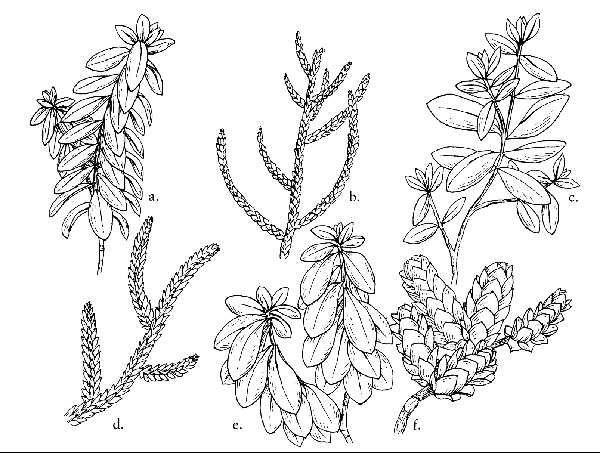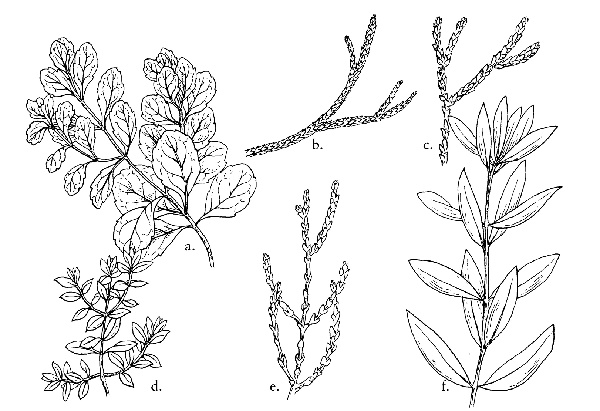Possibly 80 species of evergreen shrubs from New Zealand, with two in the Falkland Islands and southern South America. They have opposite pairs of simple, entire, or rarely toothed leaves and mainly small, tubular-based flowers with four, subequal, spreading petal lobes arranged in often dense axillary racemes or rarely panicles. The genus falls easily into two groups, those with normal leaves - in the range elliptic, oblong, lanceolate, linear - and the so-called whipcords and semi-whipcords which have tiny overlapping scale leaves creating the appearance of a conifer. (Seedlings and juvenile plants have small but normal, usually toothed leaves). Although a very diverse genus, the characters that separate certain species from each other are often very small. Botanically, the genus is divided into ten sections using such characters as the presence of absence of sinuses in the terminal buds, whether the inflorescences are terminal or axillary, simple or branched, length or pedicels, type of inflorescence bracts and whether in opposite pairs or alternate, etc. Mostly they are not absolute characters and can vary. Added to this is the fact that all species seem to be highly interfertile and hybrids between species are iegion. For these reasons, gardeners find hebes difficult to identify with accuracy and many wrongly-named plants are widely grown. A new botanical study of the genus has just begun and this will almost inevitably lead to a new classification and name changes.
Although the genus has a reputation for tenderness, about half of the known species are montane to subalpine, with ten or so of these incontestable high alpines. Most of these mountain species and the hybrids between them are reasonably hardy, surviving all but the most prolonged frosty winters. All those described here can be grown on the rock garden, though some will get too large in time. They do, however, lend themselves to short term culture, being easily replaced by cuttings when too big. Any well drained but not dry soil is suitable and a fairly sunny open position with some shelter from the coldest winds. Propagation by cuttings at almost any time, though late summer to autumn in a cold frame is best, especially for the whipcords. Seed also can be used, but unless from isolated or wild plants the chance of hybrids is high.

a, H. albicans; b, H. armstrongii; c, H. chathamica; d, H. ciliolata; e, H. elliptica; f, H. haastii;

a, H. lavaudiana; b, H. lycopodioides; c, H. ochracea; d, H. pinguifolia; e, H. salicornioides; f, H. subalpina;
Sign up for our newsletter to receive our monthly update direct to your inbox. Featuring our latest articles and news.
Built by Atomic Smash

